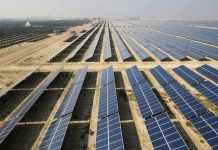ISLAMABAD: Coal is one of the best viable and cheap options to generate electricity for Pakistan where power tariff generally remains on the higher side due to high cost of production from imported gas and furnace oil.
According to Shamsuddin Shaikh, former CEO Sindh Engro Coal Mining Company, the major problem with the local coal is that Pakistan’s coal power plants are designed according to the imported coal.
“As a consequence, Pakistan is not able to convert the entire plants to local coal, but it can do so partially. In order to alter the design, a large investment is required,” he said.
The second reason is that the coal is being phased out of the world’s energy mix because of its adverse environmental effects, so Pakistan faces financing challenges as well.
In January 2022, the cost of electricity generation from coal was Rs14.1 per kilowatt-hour (kWh) which is lower than other sources like RLNG (Rs16.7/kWh), furnace oil (Rs22.1/kWh), and high-speed diesel (Rs25.98/kWh).
The China-Pakistan Economic Corridor (CPEC) amplifies the coal power generation considerably. According to the National Electric Power Regulatory Authority (NEPRA), 14 energy projects having 11,648MW capacity have been started under CPEC with $18.6 billion investment. Some projects are completed and others are under process in different phases. Out of this total capacity (11,648 MW), 8,220MW (nine projects) is coal-fired power generation with an insured debt of $8.7 billion by major Chinese banks including the Industrial and Commercial Bank of China, Export-Import Bank of China and China Development Bank. Out of nine coal-based power projects, five projects having a capacity of 3,960MW are based on Thar coal, while the remaining four projects having a capacity of 4,260MW are based on imported coal.
According to Arif Habib Limited, a leading investment banking and research firm, in CY-2017, coal share in electricity generation was only 4.2%. As the coal power projects under CPEC were completed, the share of coal power reached 20% in CY-2021.
The cost of electricity generation increased by 72.4% in December 2021 as compared to December 2020. This rise in cost is basically due to an increase in the prices of furnace oil and RLNG, WealthPK reported.
As the coal-based projects become functional, the demand for coal is increasing. Pakistan imports coal from South Africa, Indonesia, Russia, and Australia. The coal import enlarges the import bill. Import bills widen the current account deficit and devalue the country’s currency.
A few months ago, 3 billion tons coal reserves were discovered at coalfield block-1 in Thar region, which is equivalent to 5 billion barrels of crude oil. It will change Pakistan’s fortune because after hydel, coal is the largest contributor to Pakistan’s electricity generation.
Sindh Energy Minister Imtiaz Ahmed Sheikh stated that the discovery of coal deposits in Thar is the beginning of a golden era.
Thar is an underdeveloped district in Sindh province. Around 87% population in the Thar region lives under the poverty line, according to United Nations Development Program Multidimensional Poverty Index for Pakistan, 2021. The government can spend earnings from the coal resources on the residents of Thar to improve their standard of living.
Due to volatility in prices of fossil fuels in the international market, Pakistan must utilize its coal resources in a sustainable way.
Coal is one of the largest single contributors to carbon emissions. On the other hand, Pakistan is one of the major environmentally vulnerable countries. The government must utilize the coal resources to stabilize the economy in a sustainable manner by adopting new techniques that help in minimizing carbon emissions.
China Gezhouba Group Corporation (CGGC), a leading construction and engineering company of China, is using underground coal power plant technology. According to the China Economic Net, this technology provides cheaper electricity with less or no carbon emissions.






